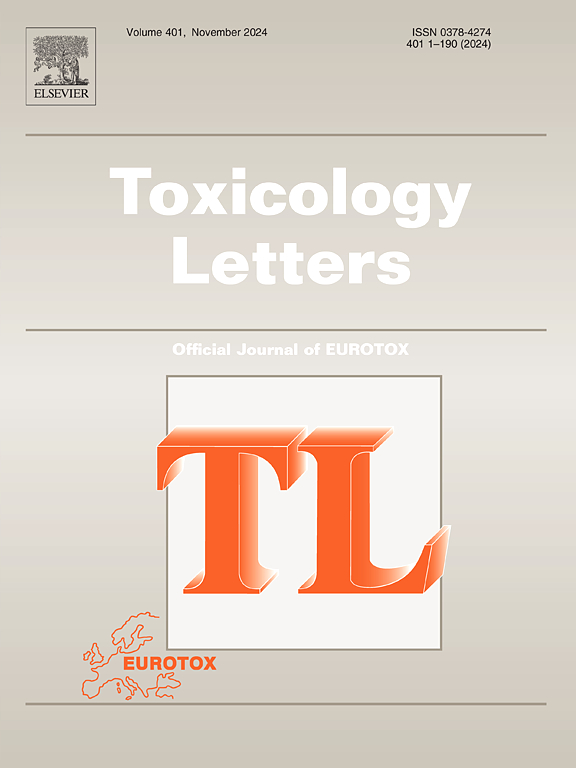髋关节植入物钴铬钼合金颗粒的毒性风险:微流控系统中动态流速对神经细胞的影响
IF 2.9
3区 医学
Q2 TOXICOLOGY
引用次数: 0
摘要
全髋关节置换术(THR)患者体内会释放出纳米颗粒和离子形式的磨损产物,尤其是在植入物失效时。在本研究中,我们使用神经母细胞瘤细胞系 N2a 细胞来评估不同流速对暴露于 CoCrMo 颗粒的神经元毒性的影响。我们假设,增加流速会提高 N2a 细胞的存活率,降低 N2a 细胞降解产物(DPs)的毒性。根据人体血管的生理剪切应力,我们进行了四次 24 小时实验,每次实验的流速分别为 0、50、100 和 200 uL/min,以评估细胞活力、细胞形态以及细胞与 DPs 的相互作用。步骤包括微流控通道制备、N2a 细胞培养、CoCrMo 颗粒采集、微流控系统组装和动态流神经毒性评估,其中包括视频显微镜、AlamarBlue、活体/死体成像、DAPI 和 ROS 检测。结果表明,流速越高,神经毒性反应越少,存活率越高,这支持了我们的假设,但整个存活流速范围还有待研究。虽然细胞与颗粒之间的相互作用是复杂和动态的,但流速确实能调节毒性、存活率、形态和生长环境。应继续开发微流控系统,通过更准确地模拟体内条件来研究植入物的毒理学方面。本文章由计算机程序翻译,如有差异,请以英文原文为准。
Toxicity risk from hip implant CoCrMo particles: The impact of dynamic flow rate on neuronal cells in microfluidic systems
In patients with total hip replacements (THRs), wear products in the form of nanoparticles and ions are released, especially around implant failure. In this study, we use N2a cells, a neuroblastoma cell line, to evaluate the effects of different flow rates on neuronal toxicity amidst exposure to CoCrMo particles. We hypothesized that increasing flow rates would increase N2a cell viability and decrease N2a cell-degradation products (DPs) toxicity. We conducted four 24-hour experiments, each with four flow rate conditions, 0, 50, 100, and 200 μL/min, based on the physiological shear stress of the vessels in the human body, to evaluate cell viability, cell morphology, and cell-DPs interaction. Steps included microfluidic channel preparation, N2a cell culturing, CoCrMo particle acquisition, microfluidic system assembly, and dynamic flow neurotoxicity evaluation, which included video microscopy, AlamarBlue, live/dead imaging, DAPI, and ROS assay. The results suggest that fewer neurotoxic reactions and greater viability at higher flow rates supported our hypothesis, although the full range of viable flow rates is yet to be studied. While cell-particle interaction is complex and dynamic, flow rate did modulate toxicity, viability, morphology, and growth environment. The microfluidic system should continue to be developed to study toxicology aspects of implants by simulating in vivo conditions more accurately.
求助全文
通过发布文献求助,成功后即可免费获取论文全文。
去求助
来源期刊

Toxicology letters
医学-毒理学
CiteScore
7.10
自引率
2.90%
发文量
897
审稿时长
33 days
期刊介绍:
An international journal for the rapid publication of novel reports on a range of aspects of toxicology, especially mechanisms of toxicity.
 求助内容:
求助内容: 应助结果提醒方式:
应助结果提醒方式:


